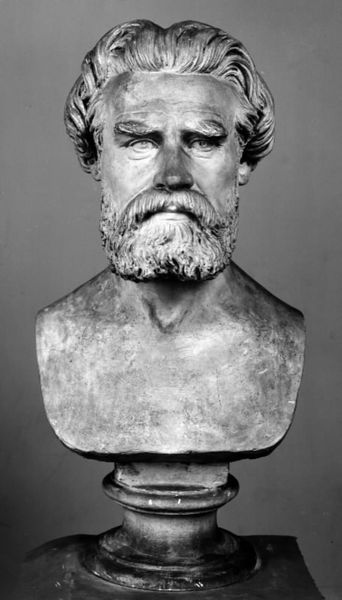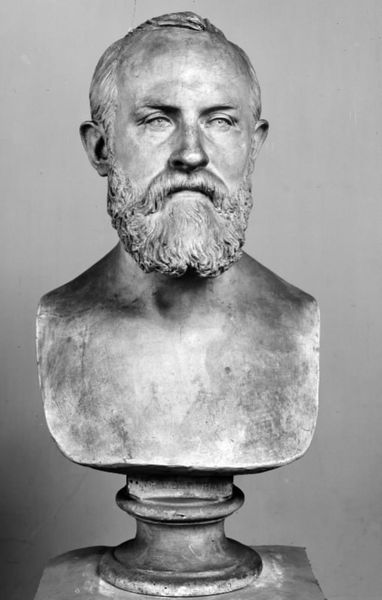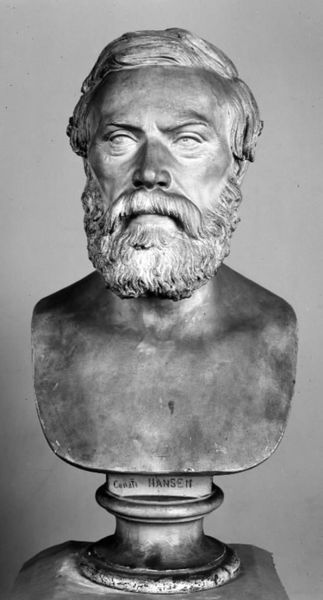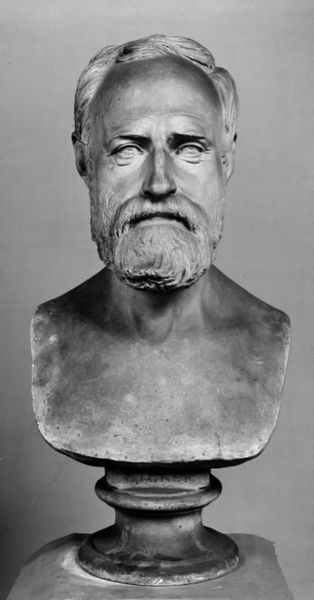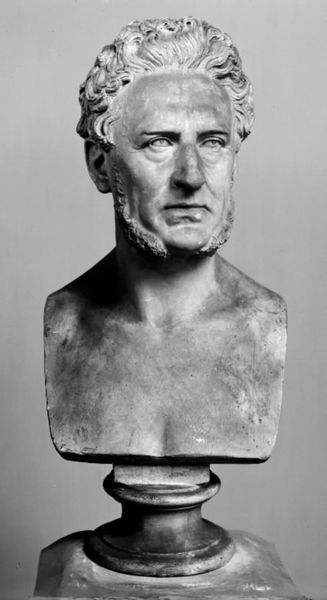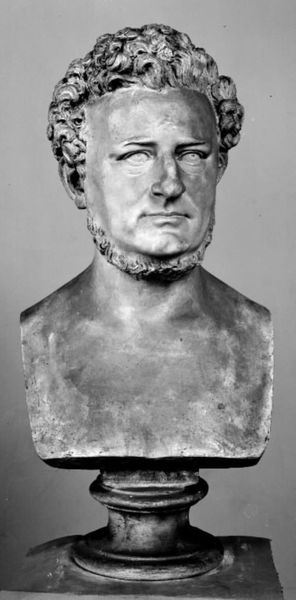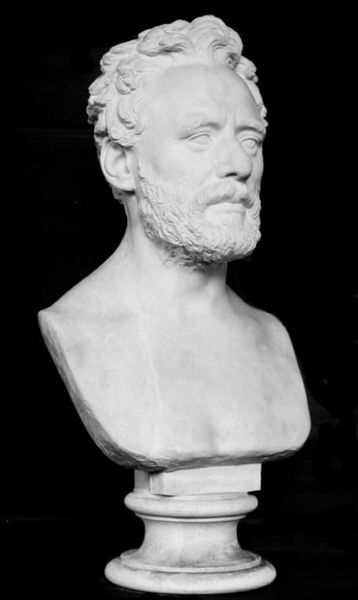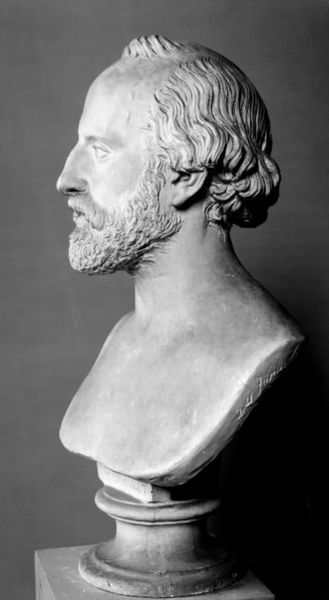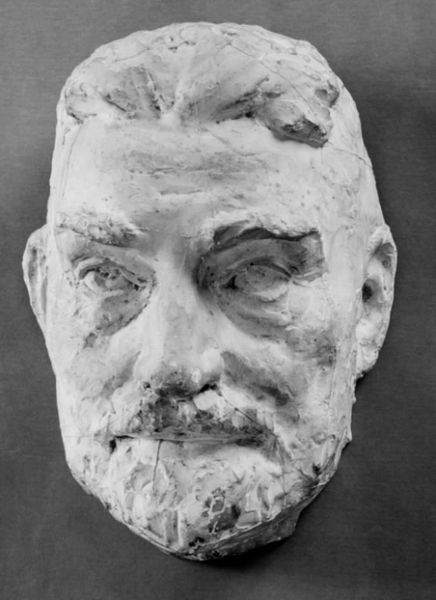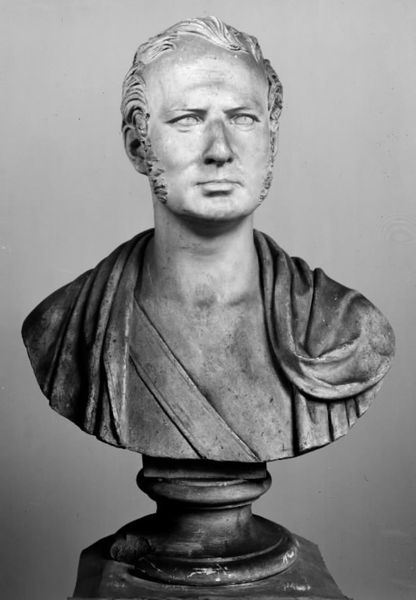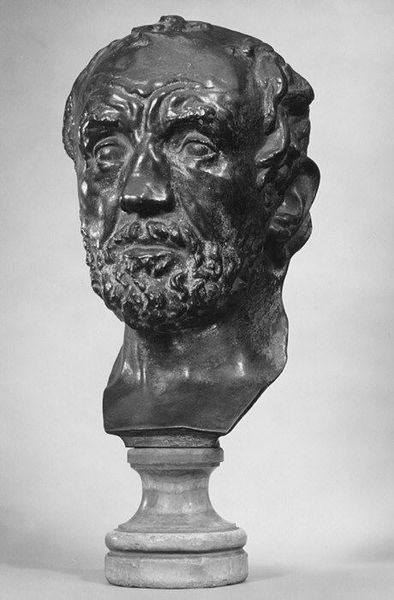
sculpture, marble
#
portrait
#
16_19th-century
#
neoclassicism
#
portrait
#
sculpture
#
sculpture
#
marble
Dimensions: 59 cm (height) (Netto)
Curator: Standing before us, we have a marble sculpture entitled "Maleren Jørgen Sonne" crafted in 1858 by H.W. Bissen. It resides here at the SMK, Statens Museum for Kunst. Editor: My first impression is one of restrained dignity. The clean lines and almost severe expression give the sculpture a feeling of controlled power. The gaze is arresting. Curator: Indeed. Bissen was a key figure in Danish Neoclassicism, so this portrait embodies that style perfectly. He utilizes a highly polished finish, emphasizing the purity of form. Editor: Do you think that marble was used to give Sonne, the painter, an elevated social status by aligning him with leaders and mythical figures, who often employed similar mediums in antiquity? Curator: Undoubtedly. Portrait busts, particularly in marble, conveyed authority. They were, at the time, objects to signify public role through form, scale, and material—not unlike awards of artistic recognition. Also, I feel like Neoclassicism came back into prominence when previous generations decided they wished for clear societal structure again. Editor: It is fascinating to contemplate the semiotics of this representation. He seems like he could be anyone, a man of the time representing values of structure, not rebellion or abstraction. I like that. The details like the stubble of his beard humanize the idealized form just enough, adding a subtle texture, a little deviation from absolute perfection. Curator: Agreed. The beard prevents it from fully removing itself into the abstract world of complete classicism. The artist achieves a potent synthesis here, embedding it in its historical context but reaching for something more. Bissen balances an almost academic formalism with very clear contemporary life, even making it difficult for viewers today to ignore the sculpture's gaze and form. Editor: I must say, I came expecting mere formal perfection. Yet this offers something deeper than expected by providing small moments to really recognize the weight this artwork carries. Curator: Absolutely. Art transcends historical eras; this encounter underlines the importance of experiencing such works firsthand.
Comments
No comments
Be the first to comment and join the conversation on the ultimate creative platform.
